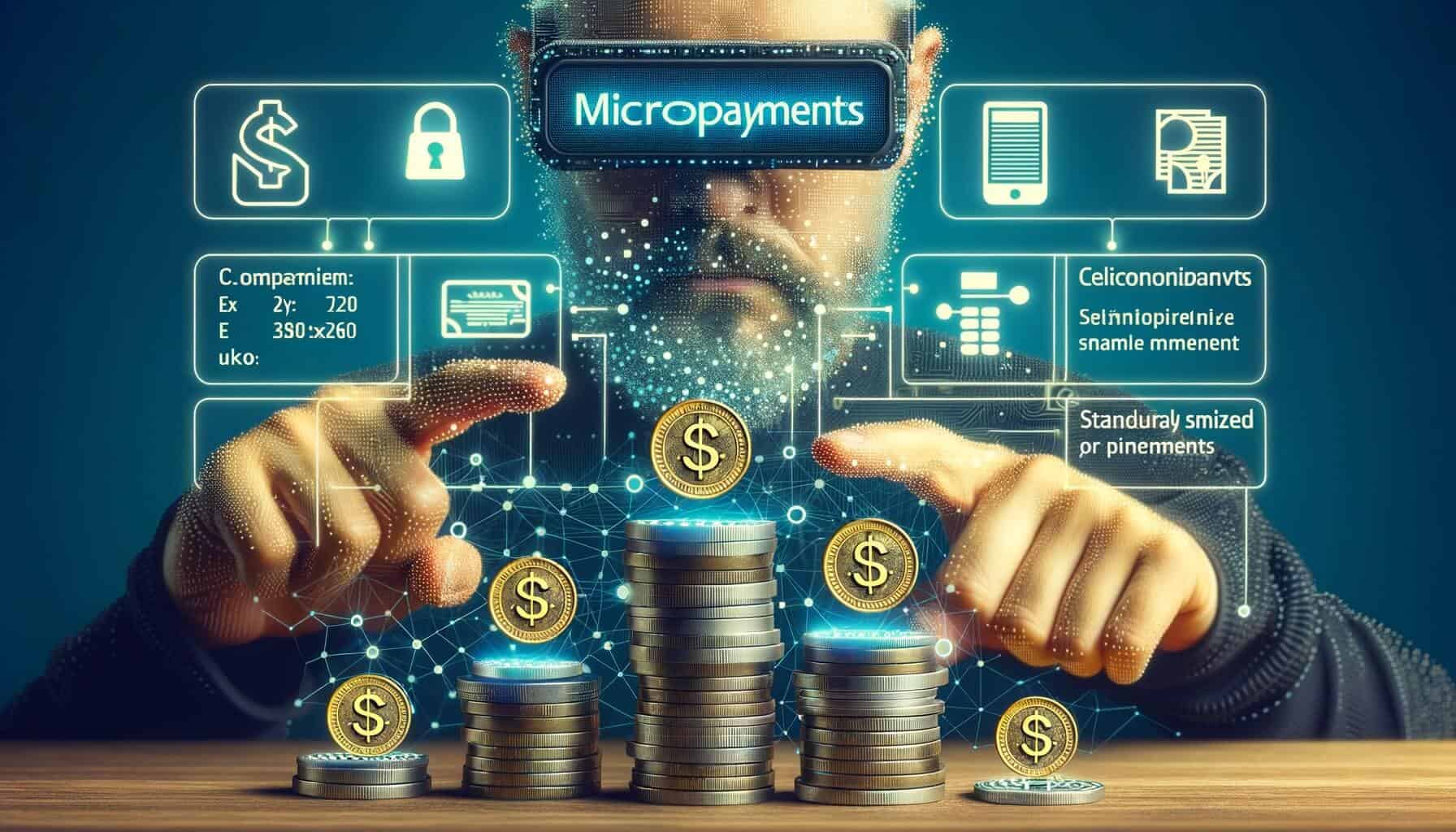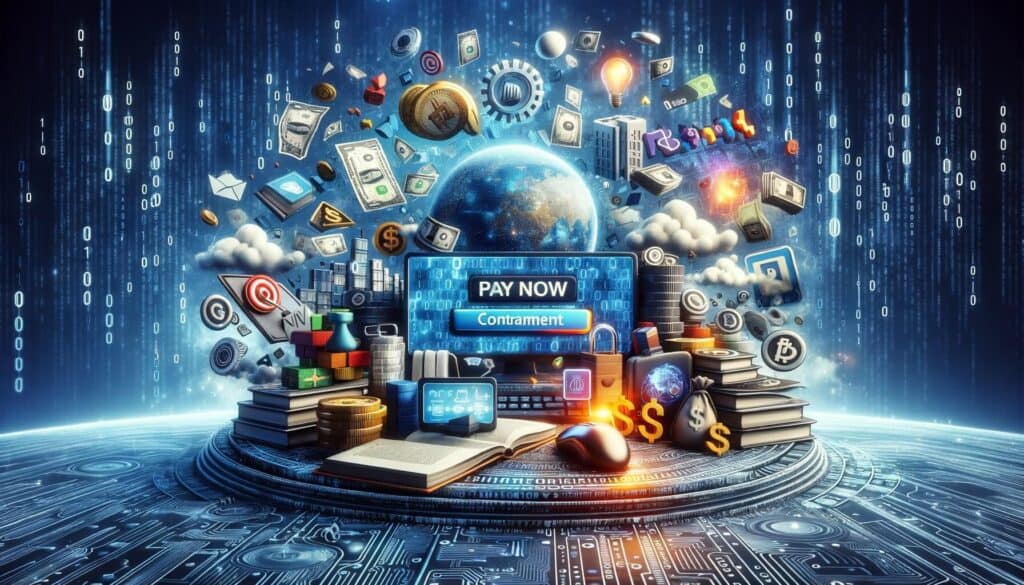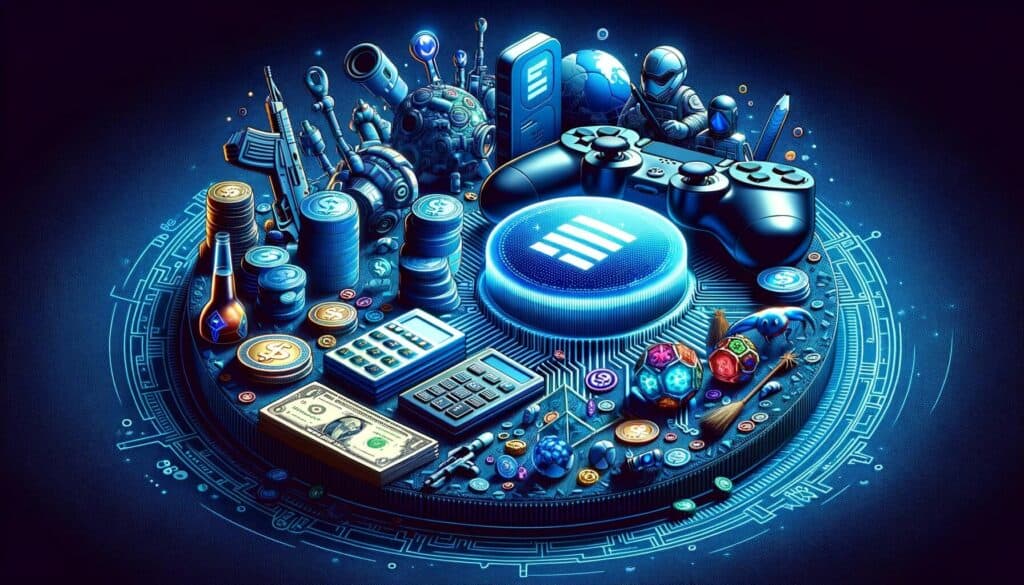
By Crystal Hopkins January 9, 2025
Micropayments have become an integral part of our digital world, revolutionizing the way we transact and consume content online. In this article, we will delve into the concept of micropayments, understand how they work, explore their advantages and disadvantages, and examine their impact on various industries.
Additionally, we will discuss popular micropayment platforms and services, the role of Micro payments in the digital content, gaming, and e-commerce sectors, and the potential of Micro payments in conjunction with blockchain technology. By the end of this comprehensive guide, you will have a thorough understanding of micropayments and their significance in the digital landscape.
Understanding the Concept of Micropayments
Micropayments refer to small financial transactions conducted online, typically involving a minimal amount of money. Unlike traditional payment methods that require a significant sum or a subscription fee, Micro payments enable users to make small payments for specific digital goods or services. These transactions are often instantaneous and seamless, allowing users to access content or services without any barriers.
The concept of micropayments emerged as a solution to the challenges faced by content creators and service providers in monetizing their offerings. With the rise of digital content and the increasing demand for instant access, traditional payment models proved to be inefficient and inconvenient. Micro payments, on the other hand, offer a flexible and user-friendly alternative, allowing consumers to pay for what they want, when they want it.
Advantages and Disadvantages of Micropayments

Micropayments come with a range of advantages that make them appealing to both consumers and businesses. Firstly, Micro payments provide a low-cost and efficient way for consumers to access digital content or services. Instead of paying a lump sum or subscribing to a service, users can pay small amounts for individual pieces of content, such as articles, videos, or music tracks. This pay-as-you-go model allows users to have more control over their spending and only pay for what they actually consume.
For businesses, micropayments offer a new revenue stream and a way to monetize their digital offerings. Content creators, for example, can charge a small fee for their articles or videos, generating income from their work. This can be particularly beneficial for independent creators who may not have the resources to create and distribute physical products. Micro payments also eliminate the need for advertising or sponsorship, allowing creators to focus on delivering high-quality content without compromising their artistic vision.
However, micropayments also have their disadvantages. One of the main challenges is the transaction fees associated with each payment. Since Micro payments involve small amounts, the transaction fees can significantly eat into the revenue generated. This can be particularly problematic for businesses with low-profit margins or for consumers making frequent small payments. Additionally, the need for users to constantly authorize and make payments for each piece of content can be cumbersome and time-consuming.
How Micropayments Work: A Step-by-Step Guide
To understand how micropayments work, let’s walk through a step-by-step guide:
- Step 1: User Registration – The first step is for users to register with a Micro payment platform or service. This typically involves creating an account and linking a payment method, such as a credit card or digital wallet.
- Step 2: Content Selection – Once registered, users can browse through the available digital content or services offered by the platform. They can choose the specific items they want to access or consume.
- Step 3: Payment Authorization – When a user selects a piece of content, they are prompted to authorize the payment. This can be done through a simple click or by entering a password or PIN.
- Step 4: Payment Processing – After the payment is authorized, the Micro payment platform processes the transaction. This involves deducting the agreed-upon amount from the user’s linked payment method.
- Step 5: Content Access – Once the payment is processed, the user gains immediate access to the selected content or service. This can be in the form of a digital download, streaming access, or any other agreed-upon method.
Popular Micropayment Platforms and Services

There are several popular Micro payment platforms and services available today, catering to different industries and user preferences. Let’s explore some of the leading platforms:
1. PayPal Micropayments – PayPal, a well-known online payment platform, offers a Micro payments feature specifically designed for transactions involving small amounts. This service provides a reduced transaction fee for payments under a certain threshold, making it attractive for businesses and consumers alike.
2. Stripe – Stripe is a comprehensive payment platform that supports Micro payments among its many features. With a user-friendly interface and robust security measures, Stripe is a popular choice for businesses looking to integrate micropayments into their websites or applications.
3. Patreon – Patreon is a unique Micro payment platform that focuses on supporting content creators, such as artists, musicians, and podcasters. Users can subscribe to their favorite creators and make regular micropayments to support their work. In return, creators offer exclusive content or perks to their patrons.
4. Flattr – Flattr is a Micro payment platform that allows users to make small donations to support their favorite websites or content creators. Users set a monthly budget, and Flattr distributes their funds among the websites or creators they engage with the most.
Micropayments in the Digital Content Industry

The digital content industry has been greatly impacted by the rise of Micro payments. Content creators, such as journalists, bloggers, and musicians, have found a new way to monetize their work and reach a wider audience. Micropayments offer an alternative to traditional advertising models, allowing creators to focus on delivering high-quality content without relying on intrusive ads.
For consumers, micropayments provide a convenient way to access premium content without committing to long-term subscriptions. Instead of paying for an entire newspaper subscription, for example, users can pay a small fee to access individual articles that interest them. This pay-as-you-go model gives users more control over their spending and allows them to support the creators they value the most.
Micropayments in the Gaming Industry

The gaming industry has also embraced Micro payments as a way to monetize games and enhance the gaming experience. In-game purchases, such as virtual items, cosmetic upgrades, or additional levels, have become increasingly popular. Instead of paying a large upfront cost for a game, users can download and play for free, with the option to make micropayments for additional features or enhancements.
This model has proven to be highly profitable for game developers, as it allows them to generate ongoing revenue from their games. It also provides a more inclusive gaming experience, as users can choose to spend as much or as little as they want, depending on their preferences and budget. However, the use of micropayments in gaming has also sparked debates around the ethics of pay-to-win mechanics and the potential for exploitative practices.
Micropayments in the E-commerce Sector
The e-commerce sector has witnessed the integration of micropayments as a way to streamline the purchasing process and offer more flexibility to consumers. Instead of paying for an entire product upfront, users can make small payments over time, spreading the cost of their purchase. This is particularly beneficial for high-value items, such as electronics or furniture, where the upfront cost may be prohibitive for some consumers.
Additionally, Micro payments have enabled the rise of subscription-based services in the e-commerce sector. Companies like Amazon and Netflix offer monthly subscription plans, allowing users to access a wide range of products or content for a fixed fee. This model provides convenience and affordability, as users can enjoy a variety of offerings without the need for individual payments.
Micropayments and Blockchain Technology
Blockchain technology has the potential to revolutionize micropayments by addressing some of the challenges associated with traditional payment systems. Blockchain, a decentralized and transparent ledger, can provide secure and efficient Micro payment solutions, eliminating the need for intermediaries and reducing transaction fees.
One of the key advantages of blockchain-based Micro payments is the ability to conduct cross-border transactions seamlessly. Traditional payment systems often involve high fees and lengthy processing times for international transfers. With blockchain, micropayments can be conducted directly between parties, bypassing the need for banks or other financial institutions.
Furthermore, blockchain can enhance the security and privacy of micropayments. The decentralized nature of blockchain ensures that transactions are recorded and verified by multiple participants, reducing the risk of fraud or tampering. Additionally, blockchain can enable users to maintain control over their personal data, as transactions can be conducted without the need for revealing sensitive information.
Frequently Asked Questions (FAQs)
Q1. Are micropayments only used for digital content?
No, micropayments can be used for a wide range of goods and services, both digital and physical. While they are commonly associated with digital content, such as articles, videos, or music, Micro payments can also be used for in-app purchases, e-commerce transactions, and even charitable donations.
Q2. How much do micropayments typically cost?
The cost of micropayments can vary depending on the platform or service used. Generally, Micro payments involve small amounts, ranging from a few cents to a few dollars. However, the exact cost can be determined by the content creator or service provider, based on their pricing strategy and the perceived value of the offering.
Q3. Are micropayments secure?
Micropayments can be secure if the appropriate security measures are in place. Reputable micropayment platforms and services employ encryption and other security protocols to protect users’ financial information. Additionally, blockchain-based Micro payments offer enhanced security through their decentralized and transparent nature.
Q4. Can micropayments be used for recurring payments?
Yes, micropayments can be used for recurring payments, particularly in subscription-based models. Users can authorize regular Micro payments to access ongoing services or content. This provides convenience and flexibility, as users can easily manage their subscriptions and adjust their payments as needed.
Q5. Are there any transaction fees associated with micropayments?
Yes, transaction fees are often associated with micropayments. However, the fees can vary depending on the platform or service used. Some Micro payment platforms offer reduced transaction fees for payments under a certain threshold, while others may charge a fixed fee or a percentage of the transaction amount.
Conclusion
Micropayments have transformed the way we transact and consume content in the digital age. With their low-cost and flexible nature, Micro payments offer a viable alternative to traditional payment models, allowing users to pay for what they want, when they want it. From the digital content industry to gaming and e-commerce, Micro payments have found their place in various sectors, providing new revenue streams and enhancing the user experience.
While micropayments come with advantages such as convenience and increased monetization opportunities for content creators, they also have their challenges, including transaction fees and user authorization requirements. However, with the potential of blockchain technology, Micro payments can become even more secure, efficient, and cost-effective.
As the digital landscape continues to evolve, Micro payments will likely play an increasingly significant role in shaping the way we access and consume digital goods and services. Whether it’s supporting independent creators, enhancing gaming experiences, or enabling flexible e-commerce transactions, micropayments offer a promising future for both businesses and consumers alike.